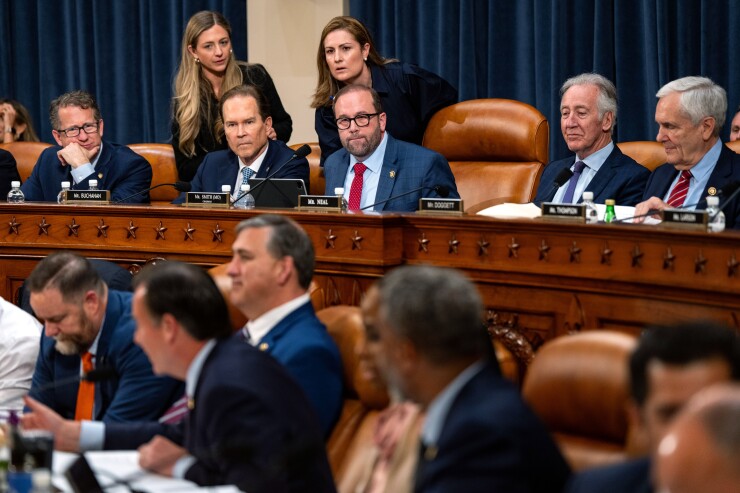President Donald Trump's signature economic package took a major step toward becoming law when the House Ways and Means Committee approved trillions in new tax cuts for corporations, households and small businesses on a party-line vote.
The bill, once it clears procedural steps, will head to the House floor for passage. But crucial issues — including an unresolved battle over the
"The one big beautiful bill is the key to making America great again," Ways and Means Chair Jason Smith said on Tuesday, kicking off the debate on the legislation.
The bill would permanently extend the lower individual tax rates enacted under Trump in 2017 including a lower 37% rate for the highest earners, after Republicans debated the possibility of raising levies on millionaires. The legislation also brings to life many of the
Those tax cuts begin this year and will last through 2028, coinciding with Trump's time in the White House.
The plan also calls for a slew of cuts for companies, including expanding or renewing write-offs for business profits, loan expenses, equipment investments and research costs.
The biggest open question is how to address the SALT deduction. The bill calls for increasing the $10,000 cap on SALT to $30,000, with a phaseout for most filers making more than $400,000. Republicans representing high-tax areas have rejected that amount and have threatened to block the bill unless the write-off is made even bigger.
"There's going to be bumps along the way in this process," Smith told reporters Tuesday.
The vote in the House tax committee came after a marathon session in which Democrats assailed the bill, casting it as disproportionately benefiting the wealthy and large corporations while adding trillions to the national debt.
"This isn't about growth or economic prosperity, it's about protecting the ultra-wealthy," Representative Richard Neal, the committee's top Democrat, said. "It's a tax cut for billionaires."
The tax provisions are projected to add $3.8 trillion to deficits over the next decade, according to the nonpartisan Joint Committee on Taxation. Spending cuts approved by other House committees do not come close to offsetting those reductions. Republicans argue that economic growth stemming from the tax cuts would ultimately erase those deficit increases, but economists are skeptical of that claim.
The bill also increases the child tax credit to $2,500 from $2,000 on a short-term basis, broadens health savings accounts and creates a new tax-preferred savings plan for children.
These breaks are partially paid for by ending many of the renewable energy tax benefits enacted under former President Joe Biden, including a credit for buying electric vehicles. University endowments, private foundations, sports team franchises and immigrants sending money to their home countries also face higher levies. Proposals to increase taxes on other businesses, including an increase in taxes on carried interest, were beaten back in a lobbying frenzy.
The House is aiming to vote next week. Republican lawmakers are hoping to move the package without the help of Democrats through the Senate and to Trump's desk by July 4.
Senate leaders have said the real deadline is the federal borrowing limit. The Treasury Department has said they will run out of
— With assistance from Derek Wallbank, Emily Birnbaum and Billy House






